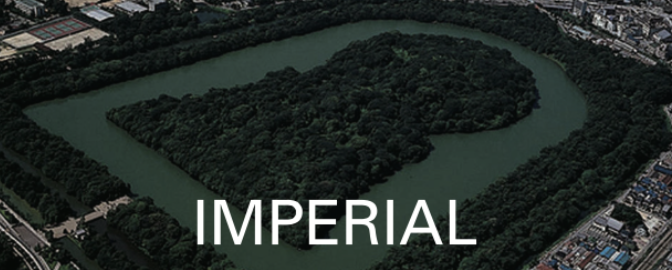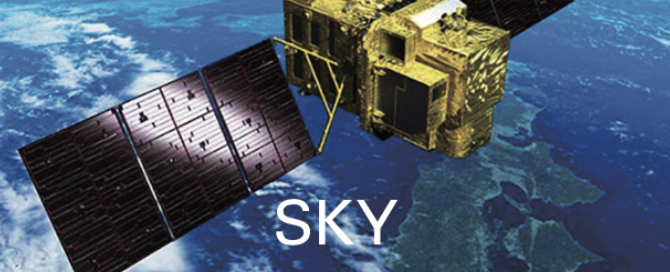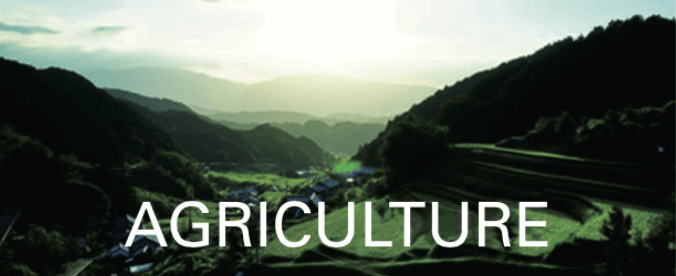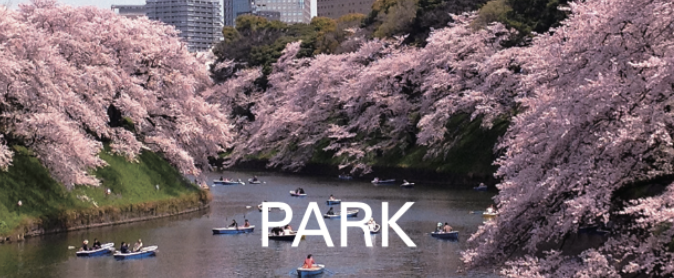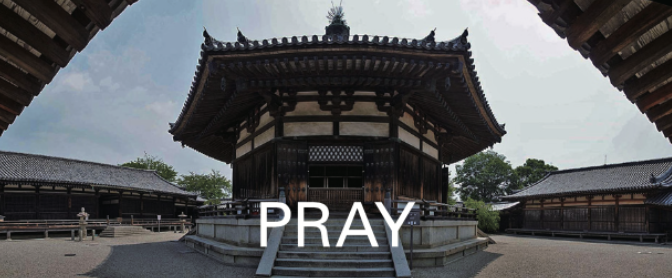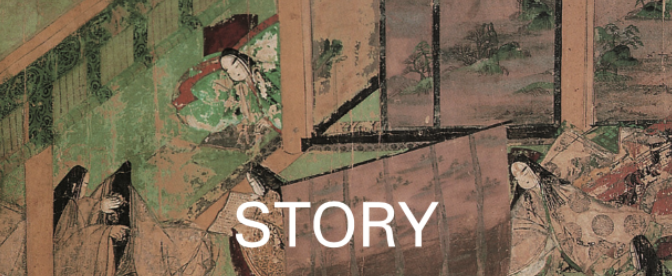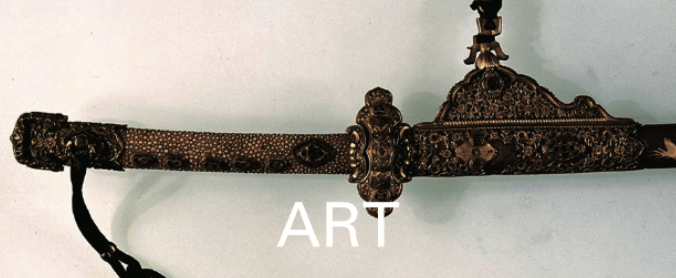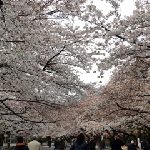
This park was designated as the first park in Japan, along with Shiba, Asakusa, Fukagawa and Asukayama, in 1869 by the notification of Daijokan, the department of State in the Meiji Emperor’s government.
During the Edo period (1603 – 1868), this park was the grounds of Toueizan Kanei-ji Temple. After the Meiji Restoration in 1868, that ground became a government-owned place, and belonged to the Imperial Household Agency.
In 1924 after the Great Kanto Earthquake, the Imperial Household Agency granted this ground to the city of Tokyo. Therefore, this park’s name has the special title, Onshi, Imperial gift.
This park used to be a park centered on the cherry blossoms in the grounds along with Kanei-ji Temple Hall and the Mausoleum, and Toshogu Shrine. It was transformed to the modern culture park by constructing a museum, a zoo, and an art museum.
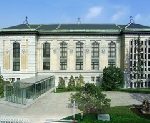
This library specializes in children’s books, with about 400,000 books, including those for children in Japan and overseas. It was established in 2000 as the Children’s Book Department of the National Diet Library. The Brick Building was built as the Imperial Library in 1906, was renovated and expanded, and its interior and exterior designs have a valuable architectural heritage. It conveys the remnant of culture and history at that time.
The Imperial Library and the Imperial Museum (present, Tokyo National Museum) used to be combined, located close to one another in Ueno, Tokyo. The library and the museum have the same origin, as a lighthouse of knowledge.
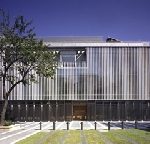
Higuchi Ichiyo (1872-1896) was a famous Japanese female novelist. This museum was opened with the cooperation of local volunteers in 1961, as Japan’s first female novelist solo museum. And it was reopened in 2006. It holds planning exhibitions, special exhibitions and the Ichiyo festival.
After learning Waka, Japanese poetry, calligraphy and classical literature, she opened a household goods store at Shitaya Ryusenjimachi near Yoshiwara Yukaku, the Tokyo licensed quarter, for earning living expenses while writing novel. That experience later became the subject of Takekurabe, her representative work.
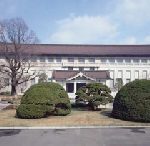
This museum was founded at the exposition held at the Taisei-den, hall of Yushima Seido, sacred basilica, in 1872. It possesses over 110,000 cultural properties, including 87 national treasures, such as treasures from Horyuji Temple Nara. You can see the flow of Japanese and oriental art.
Okakura Kakuzo Tenshin (1862 – 1913), a Japanese scholar who contributed to the development of Arts in Japan and the author of The Book of Tea, was the art director of this museum in the middle of the Meiji period (1868 – 1912). He established the study of Japanese modern art history.
Mori Rintaro, who used the pen-name Mori Ogai (1862 – 1922), was a Japanese Army Surgeon, general officer, translator, novelist, poet, and was the president of this museum during 1917 – 1922 in the Taisho period (1912 – 1926).

This museum currently holds approximately 9,800 works of art which were inherited from the imperial family and the relics of Empress Kojyun (1903-2000) and the gifts from the imperial family.
This work is a six-panel screen created as a pair and was dedicated to Mori Motonori. The work in the right wing is a very famous painting by Kanou Eitoku (1543-1590), the great master of the artist’s society in the Momoyama period, which was certified by Kanou Tanyu (1602-1674).
The figure of the majestic lion that stalks between the rocks is drawn by a very powerful writing method, and while it is a simple design, its power and courage are the style of Eitoku’s own work.
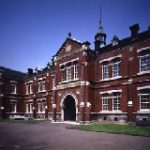
This Former Headquarters of the Imperial Guards is a classic example of Western-style brick construction in the Meiji period (1868 – 1912), which worked on the revision of the unequal treaties with the Western powers.
It is also an important building as a remnant of public architecture of the Meiji period. This building was designated as an important cultural property. Its Gothic style was designed by Tamura Yasushi (1878-1942), an army engineer. It has an octagonal tower at the entrance in the center that overhangs both wings.
This building was saved and restored in 1973. : Crafts Gallery, The National Museum of Modern Art, Tokyo was here. It is moving to Kanazawa City, Ishikawa Prefecture in October 2020 after ceasing operation in Tokyo on February 28, 2020. The public opening of the Former Headquarters of the Imperial Guards is under consideration, including restoration.
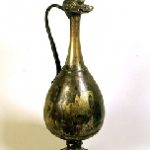
This gallery permanently exhibits masterpieces dedicated to the Imperial family from Horyuji Temple Nara in 1878. These treasures are the perfect match for the treasures of Shoso-in: the treasure house of the Imperial Household Agency, in the collection of ancient art. And these treasures include many items in the 7th century, but the treasures of Shoso-in are mainly from the next generation, the 8th century.
There is the National treasure Dragon-head pitcher, in Gold and silver plated bronze. The dragon’s head is a spout, the thin dragon’s body is the handle, the dragon’s upper jaw is the lid, and the dragon’s eyes are fitted with pale green glass. On the thinly made body, two pairs of Pegasus are finely engraved and gold plated to stand out. Combining the traditional motifs in the east, the Dragon, and those in the west, Pegasus, the shape and pattern are powerful and lively.

Nanko Rest House is in the Outer Gardens of the Imperial Palace, which sells souvenirs of beautiful scenes in various parts of Japan. The Outer Gardens of the Imperial Palace is the National Gardens and the representative park of Japan. There is a large lawn, studded with black pines, a popular variety along the Japanese coast. There is also the outer moat of the Edojo castle and historical buildings of the castle gate from the Edo period (1603-1868). The landscape of early modern and modern are harmonized here. These gardens were part of the Edojo castle during the Tokugawa Shogunate and were grounds and Stables during in the Edo period. These gardens used to be the site of the shallow Hibiya creek at the beginning of the 17th century. The Tokugawa Shogun reclaimed the land and the feudal lords near the Shogun built the houses. After the capital moved to Tokyo from Kyoto, the Edo castle became the Imperial Palace of the Emperor. This site later became Koshitu Enchi, the garden of Emperor family. Uchibori Street (the road of triumphal return) passes the Outer Gardens of the Imperial Palace. Gyouko Road (the Emperor’s outgoing road), after crossing the Uchibori Street, reaches Tokyo Station. This road was built as the reconstruction work after the great Kanto earthquake (1923).

The main task of this station is the tracking and control of artificial satellites.
This station receives radio waves from artificial satellites, transmits command radio waves to the satellite, according to the situation, and maintain and manage the satellites. In the exhibition room, there are scaled models of rockets and satellites, and a tracking simulator where you can have a hands-on experience of satellite tracking. You can learn environmental change here, too.
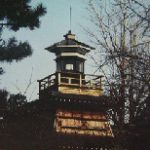
This shrine which enshrines Ise Jingu Shrine spirit, was registered in the Engi-Shiki, the code of Japanese governmental regulation in the 10th century. This shrine began when Prince Yamato-takeru-no-mikoto prayed for the settlement of the eastern provinces and for the people suffering from a drought in his east expedition in 110.
The god of Oohi, the god of sun, has been worshiped by the fishermen since ancient times. In the Kamakura period (1185 – 1333), a hand-written mandala of Nichiren, the founder of the Nichiren Sect, and swords were dedicated.
In the Edo period (1603 – 1868), Tokugawa Ieyasu (1543 – 1616): the founder of the Tokugawa Shogunate, donated the land to this shrine. Nightlights in this shrine ground used to be the guide for night voyages.
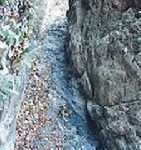
In 708, Natural Copper “Nigiakagane” from Wado mountain at Kuroya Chichibu City, was offered to the Imperial court. Natural copper does not require refining. Two fault lines, exceeding 100m, are what remains of the open the former mining site.
This museum exhibits more than 350 ores related to “Nigiakagane”, throughout Japan, East Asia and the United States.
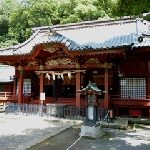
This shrine is also known as the shrine of the founding in the BC. Mt. Izu had been worshiped as a holy mountain and a sacred place of Shugendo, Japanese mountain ascetic practices. It was said that Kobo Daishi Kukai (774 – 835), the founder of the Shingon sect also visited.
The site of this shrine is the part of the Kogoi Forest well-known for small cuckoos. You can overlook the Izu sea and Sagami-nada Sea, the sea off the coast of Sagami and Izu Oshima Island, and see Gojinka, the deified volcano, floating in the distance, like a mirage.
This shrine enshrines Izu Okami, which Minamoto no Yoritomo (1147 – 1199), the 1st shogun of the Kamakura Shogunate, devoutly worshiped, and prayed for the retrieval of the Minamoto clan. This shrine has kept the prestige with which Kamakura shogunate (1185 – 1333) admitted this shrine, to guard the eight Edo-period provinces of Kanto.

This Museum is located on the Makinohara Daichi plateau, which is one of Ochadokoro, a tea-growing district in Japan. You can learn about the culture and history of tea while tasting tea from around the world, as well as the local tea.
The Shoin, the drawing room or reception building, the tea-ceremony room, and the garden were restored, which were designed by Kobori Enshu (1579 – 1647), a feudal lord, a master of the tea ceremony, an architect and garden designer. The garden was restored like the east garden of Sento Imperial Palace in Kyoto Imperial Palace, as it was at the time of landscaping. The garden shows well the characteristics of Kirei sabi, rich beauty and refined simplicity by Enshu, which binds rich beauties, using stone lay-outs and combinations.

A Japanese-style wooden flat house, the Numazu Imperial Villa was built in a scenic area surrounded by Suruga Bay and Mt. Fuji in 1893. The great Numazu Air Raid destroyed the main house, but the east and west annex residences remained.
The west annex residences are a large-scale wooden Meiji house, which still reveals traditional techniques everywhere, and is open to the public in the Numazu Imperial Villa Memorial Park.
The east annex residences have “Suruga Taian”, a reproduction of the National Treasure tea room “Taian” that is said to have been created by Sen no Rikyu (1552-1591): the greatest team master, and the tea master to the military dictator of Japan, Oda Nobunaga and Toyotomi Hideyoshi, to invent the wabi-sabi style of tea ceremony.
You can also enjoy the Japanese garden, and Shourai, the sound of pain trees with sea wind.
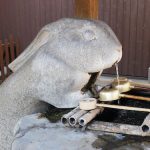
This shrine has sculptures of rabbits in the shrine building and stone rabbit statues at the at the entrance to the precincts. They are believed to be Kamisamano Otsukai, Divine servants. Tuski means an offering.
The prototype of this shrine is a group of warehouses that collected rice and special products for offering to Ise Jingu in Mie, to pray for the prosperity of the Imperial family, the peace of the world, and the huge harvest, in ancient time.
Tsuki also sounds the same as the moon in Japanese. Around 1500, in the Muromachi period, this shrine was worshiped as the shrine of the Moon God, which led to the belief in the moon. And Japanese people have believed that rabbits live on the moon.
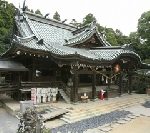
“Worshipping from the cultivators of ancient Japan” -Mount Tsukuba and this shrine have been worshipped since the expansion of agricultural industrialization to Eastern Japan, during the Yayoi period. Wet-Rice farming required intense labor. Here, there was also a rich history of Utagaki, a feast of dancing and singing, celebrating young men and women in ancient Japan.
This shrine enshrines the two gods, Izanagi and Izanami. Izanagi, the male deity who fathered Japan and Izanami, the female deity who mothered Japan, in the mythology of Kuni-umi (the birth of the land of Japan) and Kami-umi (the birth of the God of Japan). From the shrine, you can take a cable car up to Miyukigahara, near the top of Mt. Tsukubasan, which has a superb view.
In the Edo period (1603 – 1868), Utagawa Hiroshige (1797 – 1858), a master of ukiyo-e, woodblock prints and paintings that depicted city pleasures and travel, drew a close-up view of Mt. Tsukubasan on the horizon of Edo (Tokyo).
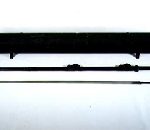
Takemikazuchi no mikoto, the enshrined deity of Kashima Jingu shrine, Ibaraki, is a god of military arts. This shrine had been worshiped well by the Imperial House, Sekkanke, the family that produced the Regent and the Chief Adviser to the Emperor, the Fujiwara clan, in the 9th – 11th centuries, worshiped at Kasugataisha shrine Nara, and the shogunate family, of the Genji clan, in the 12th – 13th centuries and the Tokugawa clan, in the 17th – 19th centuries.
This shrine possesses Chokuto Kurourushi-hyomon-tachikoshirae, a Black-lacuered Hyomon, mounted straight sword, from the 8th-9th centuries. It is a National Treasure that descended from the Shosoin (treasure house of Todaiji temple Nara) treasure, Kingindenso no karatachi, a sword made by the ancient lacquer-decorating technique with sprinkled gold power. Takemikazuchi no mikoto, is the thunder god and the god of swords, which enriches the agricultural fields.
You will discover the relationship between this treasure and agriculture industrialization in ancient Japan. This god has the majesty for peace in state security and for bumper crops in agriculture.
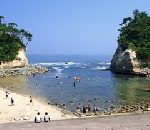
Takahagi city’s coastline is a scenic spot with two fleets sided by rising sea cliffs, where the blue of the sky and the sea, the green of the pine that covers the sea cliffs, and the white of the beach, all shine. Akahama Beach stretches as far as the bow, and it is ” Tazuna no Hama – beach” which was described in the reminiscent poem of the family in the capital, published in Manyoshu, the 8th century anthology of Japanese poetry.
The Kita-Ibaraki region, where Taga Mountains are located, is considered to be a Province of Taka. The ruins of buildings and villages, such as government offices remain. From here, the Yamato Imperial Court extended to Mutsu Province, the northeast region of Honshu Island, during the Nara period (710 – 794).
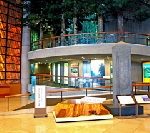
This museum has a permanent exhibition of the history of Tochigi Prefecture from the geological age to the present day, and introduces the thick connection between the Yamato Imperial Court and Kuni no Miyatsuko, regional administrator, in Shimotsuke Province, Tochigi, with excavated items which occurred the restoration of Zenden, front palace, in Shimotsuke Province office.
Shimotsuke no Komaro, a government officer during the Asuka period (550 -710), was one of the compilers of the aiho Code in 701 in the Ritsuryo system, a system of centralized government based on Ritsu, a criminal code and Ryo, an administrative code, who received the trust from Fujiwara no Fuhito (659 – 720), a powerful member of the Imperial court, and the father of Empress Komyo: the consort of Emperor Shomu (701 – 756).
Along the trust, one of Three Kaidanin, the original ordination halls for priests in Japan established in 754, by Ganjin (688 – 763), a Chinese monk who helped to propagate Buddhism in Japan, was established at Yakushiji Temple in Shimotsuke Province, Tochigi is just like Todaiji Temple in Nara, and Kanzeonji Temple in Dazaifu, Fukuoka.

Tukiyono, Minakami Town, at the foot of Mt. Tanigawadake and Mt. Mikuniyama, is where the Tone River’s water flows through. In Yaze Shinsui Park, a lawn plaza and a hydrophilic area has been developed, and the remains of the Jomon settlement, the Yazei site, from 3500 to 2300 years ago, was discovered.
Minamoto no Shitago (911- 983), a Japanese courtier and poet, who traveled from Kyoto, made a poem “Beautiful field of Moon Light”, looking at the moon rising from Mt. Mitsuminesan in the east of Tukiyono. The name Tukiyono means “the field of moon light” and came from Shitago’s poem from the Heian period.
This place is a remnant of Japan, with its multi-layered structure.
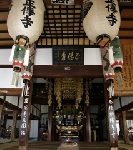
This is an ancient temple, which is said to have been built 500 years ago. It is the 1st temple of the 33 temples of Akita Kannon (the Buddhist Goddess of Mercy) Sacred Sites Pilgrimage. The long approach with the cherry blossom trees, leads to Sanmon, the main gate of the temple. Shoro-mon, the gate with a bell tower, and the main temple, makes the calm atmosphere suitable as the 1st temple of the Pilgrimage.
The principal image of this temple is the statue of the Sacred Kannon. It is said that the statue was given by Hasedera Temple in Nara at the time of the founding of this temple. It is a statue from the Nara period (710 – 794). This statue is the oldest gilt bronze statue of the Buddha in the Tohoku region and is proof that the faith of Kannon in Hatsuse Oguni, Nara, had been transmitted to this place.
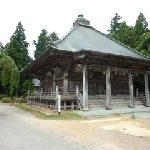
It is said this temple near Yakushi Park in Kurihara City was founded in 775 by the Imperial order of Empress Koken (718 – 770). Although this temple suffered many fires and wars, in the Medieval ages, local people continue to worship at this temple. This temple was restored in the early modern times by the Date clan, lords of Sendai Domain.
The wooden sedentary statue of Yakushi Nyorai, the Buddha of Healing, is said to have been made by Saicho, Dengyou Daishi (767 – 822), the founder of the Buddhist Tendai sect. The statue is open to the pubic two days a year at Bunkazai Shuzoko, the Cultural property repair warehouse, after it was restored from damage in the Great East Japan Earthquake, in 2011. And 1,200 year old cedar has been overlooking most of the history at the eastern end of the precinct.
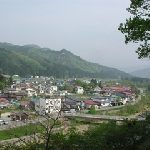
“Hotaru no Sato – firefly village” of Onogawa Onsen, hot spring, is located along the Otaru River. The Otaru River runs from Mt. Iidesan, which has been worshiped as the mountain of gods, since ancient times. The Otaru River connects to the Omono River, which is one of the water sources of the Mogami River. There is a very rare pond where you can appreciate the naturally generating Genji fireflies, Luciola cruciate, Heike firefliers, Luciola lateralis, and Hime fireflies, Hotaria parvula.
The name of this place comes from Ono no Komachi (825 – 900), a Japanese female poet of unusual beauty, who was said to be the daughter of the district governor in Dewa Province. The fireflies dance wildly and the radiance reminds us of the Dynastic Romanticism in Japan.
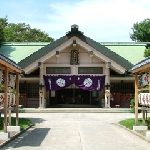
Aomori City used to be called the village of Utou. Utoujinja shrine was rebuilt by Sakanoue no Tamuramaro, the first Shogun, Great General. It was rebuilt to protect Oshu (Northern Honshu, the region encompassing Mutsu and Dewa province), Mutsu Province, Sotogahama, during the Tohoku, Northern Honshuu, expedition in 807.
This shrine enshrines the Munakata Sanjojin, the three Goddesses of Munakata in Kyushu (southernmost of the four main islands of Japan) Fukuoka. Munakata. The Three Goddess were worshiped by the marine clans and were celebrated as a national god after the 5th century. Utou Mai, which revives its history, is a dedicated prosperity memorial dance created by the Ise Jingu Music Department.

Yamagata safflower was sold at high prices in Kyoto and Osaka during the Edo period (1603 – 1868). The safflower merchant took culture back from Kyoto and went up the Mogami River. Utagawa Hiroshige (1797 – 1858), a Japanese ukiyo-e artist, painted city pleasures and travel, using woodblock prints and painting.
He drew famous places in Japan, with bold designs and the beauty of indigo color. Hiroshige left his original paintings called “Tendo Hiroshige” here, at the request of the Tendo Domain. Works here include the cherry blossoms of Mt. Yoshino, Nara and the autumn leaves of the Tatsutagawa River Nara.
At this museum, you can also think of the future environment through the landscape paintings of precious Hiroshige works that convey the various remnants of ancient Japan.

During the Edo period (1603 – 1868), Sakata was run by a self-governing organization, “Sanju-roku nin shu – 36 wealthy merchants,” which consisted of the Homa family and other wealthy merchants. Sakata was called Sakai in the west, which was the big merchants city and was also run by a self-governing organization, in Osaka.
This museum possesses many antiquities from the early modern times. It also has the villa, Seien-kaku, which was made with Hinoki no Shiho Masa, superior pillars of Japanese cypress. These were square timber, with its grain visible on all four sides, and was built elaborately in the Kyoto-style. Kakubuen Garden, a Japanese style garden with a path around a central pond, has Shatsukei, a landscape borrowed from Mt. Chokaizan.
This museum also introduces the history of Sakata Harbor, which had thrived with Kitamae-bune, cargo ships that sailed the Japan Sea during the Edo period (1603-1868).
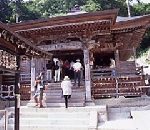
The 1,015 stone steps lead to the spectacular view of the Okunoin, the Inner sanctuary of this temple. Matsuo Basho (1644 – 1694): the most famous poet of the Edo period, felt the quiet, mysterious profundity, while climbing the stone steps, and left a famous poem.
This temple is one of the four temples built in the Heian period (794 – 1185), by Jigaku Daishi Ennin (794 – 864), the 3rd head of the Buddhist Tendai sect. The others are Zuiganji Temple, which protected the Mutsu province office and Tagajo Castle, Chusonji Temple and Motsuji Temple, which were Genbu, a black turtle and snake – the Taoist god of the north direction, and Rishakuji Temple, which was Byakko, a white tiger – the Taoist god of the west direction.
Fumetsu no hoto, the eternal dharma flame continues to light Konpon Chu-do, the largest central hall. This was transferred from Enryakuji Temple in Shiga, founded by Ennin’s teacher, Saicho, Dengyou Daishi (767 – 822), the founder of the Buddhist Tendai sect.
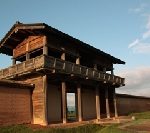
The National Designated Historical Site, Shiwajo Castle is 75ha (120ha at the Heijyou Palace site in Nara and 100ha at the Tagajo castle site in Miyagi). It was the northernmost government in ancient Mutsu domain. Shogun Sakanoue no tamuramaro built it in 803. This park is a restored park based on the results of excavations.
The Korean peninsula was unified by Silla, and the continent China had unified states of the Sakai and the Tang Dynasty. This site is a cultural facility conveys the tension that the Yamato Imperial Court had in promoting the unification of the Japanese archipelago.
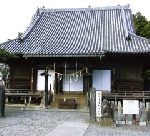
Date Masamune (1567 – 1636), the founder and the first lord of the Sendai Domain, moved Sendai from Iwadeyama Osaki and started to develop Sendaijo Castle and the castle town, when he was 35 years old. That development of the castle town included the construction of main routes in his province and the merging of rivers to transport supplies. That development also included the reconstruction of the shrines and temples, to support the mind and memory of people in the Tohoku Region.
Mutsu Kokubunji temple and Yakushido, the temple dedicated to Yakushi Nyorai, the Buddha of Healing were included in the reconstruction by Masamune, which are now in the historical site parks.
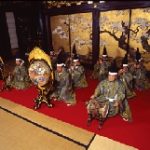
It is said that Emperor Shunde secretly escaped and lived hiding in Mt. Funagatayama, Yamagata. He was exiled to Sado Island, from Kyoto. Obanazawa had long been connected to Kyoto through mines and has had cultural exchanges. This Gagaku, Japanese court music, is performed at Saitansai, a ritual to celebrate the New Year, held in the Imperial Palace, at Suwajinja shrine in Obanazawa City. It conveys the elegance of the Imperial court in Kyoto in the present day. It is now dedicated with the shrine maiden dance.
The nearby Ginzan Onsen, hot spring, is a hot spring town with Taisho Romanticism style, before the Kanto Great Earthquake in 1923. You can feel relaxed in the atmosphere of an old-time hot spring town.
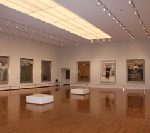
Oyama Chusaku (1922 – 2009) was the authority of Japanese modern painters, who came from Nihonmatsu City. He studied under Yamaguchi Hoshun (1893 -1971), who studied under Matsuoka Eikyu (1881 – 1938), painter and the younger brother of Yanagita Kunio, scholar and the father of Japanese native folkloristics. His theme covered a wide range of subjects, such as flowers and birds, and landscapes.
This work was exhibited at the first Nitten, Japan Fine Arts Exhibition in the 21st century, which is sharing the traditional Japanese beauty of Mt. Fuji in red and the red-crowned Japanese crane, in the early morning of late summer/early autumn.
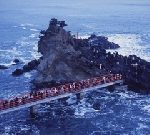
This temple is located near Bentenjima Island, on the Hattachi Coast of Hisanohamamachi Town. It is said to be a temple of Hydrangea, where Hydrangea blooms during Tuyu, the rainy season in Japan, from June thru the beginning of July. This temple was founded in 806 by Tokuitsu (749 – 824), a scholar-monk who founded many temples in northeastern Japan, who enshrined Amida Nyorai, the principal image of Buddha in Pure Land.
Amida Nyorai was said to have come from India, to guard the marine, at this temple, and enshrined the statue of Yakushi Nyorai, the Buddha of Healing, on Bentenshima Island. Tokuitsu was a priest who studied the Hosso sect in the Nanto-Nara, south historical capital of Nara.
The Hosso sect was the sect brought from Nalanda, India by Genjo Sanzo (602 – 664), a Chinese monk who travelled to India, was the writer of “The Great Tang Dynasty Record of the Western Regions”, and was the founder of Hosso sect of Buddhism.
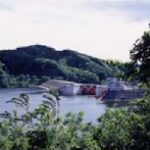
The surface of this lake is blue, a clear contrast to the green mountains in summer, and the mountain mirror that is colored with autumn leaves in autumn. It is a landscape that was mentioned in the poem by Izumi Shikibu (Born 876), a Japanese female poet and a femme fatale with numerous lovers, – “Arazaramu Konoyono HoKanou Omoideni – Soon I will die. As a memory to bring to that world, (I just want to see you again)”
In the Nara period (710 – 794), Ishikawa Town was in Iwaki province, the gateway to Mutsu Province, the northeast region of Honshu Island. It is where Minamoto no Arimitsu (1037 – 1086), a military commander in the Minamoto clan, and the 2nd head of the Ishikawa clan, moved to from Settsu Province Osaka, developed and ruled.
Ishikawa Town is said to be the birthplace of Izumi Shikibu. Her poetry described the true feeling in the court during the Heian period (794 – 1185), much like the surface of this lake.
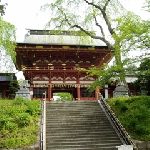
There is Shiwahiko shrine on the site of Sakai Shrine. Shiogama shrine is the Mutsu Ichinomiya, Mutsu most important provincial shrine, and Shiwahiko shrine is the Myoujin Tasiha, a shrine of the highest rank in the Engi-Shiki, the code of Japanese governmental regulation of the 10th century.
Shiogama shrine worships the deity of salt manufacture, Shiotsuchinooji no Kami appeared in Japanese mythology of “Umisachihiko and Yamasachihiko”, as the main enshrined deity. This shrine enshrines gods of the military arts, Takemikazuchi no mikoto, the enshrined deity of Kashima Jingu shrine, Ibaragi, and Futsunushi no kami, enshrined deity of Katori Jingu shrine, Chiba.
Date Masamune (1567 – 1636), a Japanese feudal lord and the founder of the Sendai Domain, moved to Sendai Miyagi in 1600 and built this shrine in 1607. The successive lords were the Supreme Priest of this Shrine, and donated their territories, swords, and scared horses, etc. In particular, the dedication of the sword, which counted 13 degrees in the Edo period, are the crystal of the spirit and skill of various craftsmen, including the Sendai swordsmith.
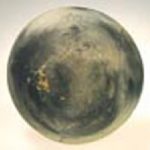
Tagajo City was an advanced area of Tohoku Ironware production in the Tumulus period. The excavated earthenware and stoneware shows that this place was an exchange for goods with the northern province including Hokkaido. The country capital office of Mutsunokuni was established in the later part of the 7th century here, and Tagajo castle was built at the beginning of the 8th century.
At that time, a temple, belonging to the castle, was also built. The 10th-century potteries, with Kannoji temple written in ink, were excavated with a clue to the name of the abandoned temple in Tagajo castle. This pottery seems to have been used as a lantern dish for Buddhist ceremonies.
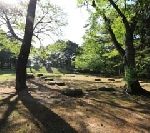
There used to be “To no Mikado” – government office located far from the capital, in this area, along with the Dazaifu in the Nara period (710 – 794). The name of the government office meant to wish for many good things to come. The outer Tsuiji-bei, the walled area of this government office, was about 900m square, and gates on the south, east and west sides, were opened. The central government office performed ceremonies in the center of the site.
Haiji Site was built as an attached temple, about 1 km southeast of the ruins of the government office. The layout of the complex of temple buildings is similar to the layout of Kanzeonji Temple buildings which was an attached temple of the Dazaifu government office Fukuoka.
